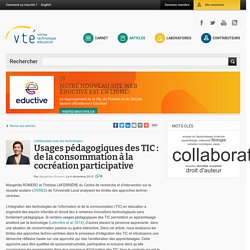

Skim reading is the new normal. The effect on society is profound. Look around on your next plane trip.

The iPad is the new pacifier for babies and toddlers. Younger school-aged children read stories on smartphones; older boys don’t read at all, but hunch over video games. Parents and other passengers read on Kindles or skim a flotilla of email and news feeds. Unbeknownst to most of us, an invisible, game-changing transformation links everyone in this picture: the neuronal circuit that underlies the brain’s ability to read is subtly, rapidly changing - a change with implications for everyone from the pre-reading toddler to the expert adult. As work in neurosciences indicates, the acquisition of literacy necessitated a new circuit in our species’ brain more than 6,000 years ago. This is not a simple, binary issue of print vs digital reading and technological innovation. We know from research that the reading circuit is not given to human beings through a genetic blueprint like vision or language; it needs an environment to develop.
Comment (et pourquoi) utiliser la réalité augmentée dans votre salon ou votre classe. Conférence internationale sur la métacognition et la confiance en soi. Usages pédagogiques des TIC : de la consommation à la cocréation participative. Margarida ROMERO et Thérèse LAFERRIÈRE du Centre de recherche et d'intervention sur la réussite scolaire (CRIRES) de l'Université Laval analysent les limites des approches techno-centrées.

L’intégration des technologies de l’information et de la communication (TIC) en éducation a engendré des espoirs infondés et donné lieu à certaines innovations technologiques sans fondement pédagogique. Si certains usages pédagogiques des TIC permettent un apprentissage amélioré par la technologie (Laferrière et al, 2014), d’autres placent la personne apprenante dans une situation de consommation passive ou guère interactive.
Dans cet article, nous analysons les limites des approches techno-centrées dans le processus d’intégration des TIC et introduisons une démarche réflexive basée sur une approche qui vise l’amélioration des apprentissages. Cinq niveaux d'usage des TIC (Romero, 2015) Introduction Ni les TIC (ni la craie, ni les crayons) ne sont des révolutions éducatives Discussion. Productive Failure (PF), Learning Design, Four Core Mechanisms. 10 Tips For Launching An Inquiry-Based Classroom. Transforming teaching practices is a long, slow road. But increasingly schools and teachers experiencing success are sharing their ideas online and in-person. Science Leadership Academy opened as a public magnet school almost ten years ago in Philadelphia.
The educators that make up the school community have spent nearly half that time sharing best practices through a school-run conference each year and more recently by opening a second school in Philadelphia. Diana Laufenberg was one of the first SLA teachers and has gone on to help foster inquiry at schools around the country, most recently by starting the non-profit Inquiry Schools.
It takes time to build up a strong inquiry-based teaching practice, to learn how to direct student questions with other questions, and to get comfortable in a guiding role. 1. Every teacher has a “bucket” of stuff she is responsible for teaching her students, known as standards. 2. The Digital Natives We Teach Are Creating A Number Of New Challenges. – EDTECH 4 BEGINNERS.
Digital natives are individuals who were born during or after the surge of digital technologies (the internet, mobile devices etc.).

Because the majority have been surrounded by tech from an early age, they are used to it and are usually very good at it. In addition, because technology changes so quickly, they have adapted to it and are not scared of new innovation; in fact most get very excited about it. What challenges arise from this? The majority of educators are NOT digital natives and quite often technology can cause anxiety and fear because of its rapid development and increasing encroachment on our lives.
Digital natives, who have never experienced life without tech, are the ones we are teaching it to! What strategies can we use to support digital natives? Thoroughly explore new technology and get to grips with how to use it before a lesson or unit.Learn from the digital natives!
QR codes. MOOC. Collaborative work. Project based learning. E-learning. SAMR. Bloom's taxonomy. Flipped classrooms. Assessment. ExitSlip. Great articles. Repenser l'education. Whole brain teaching.